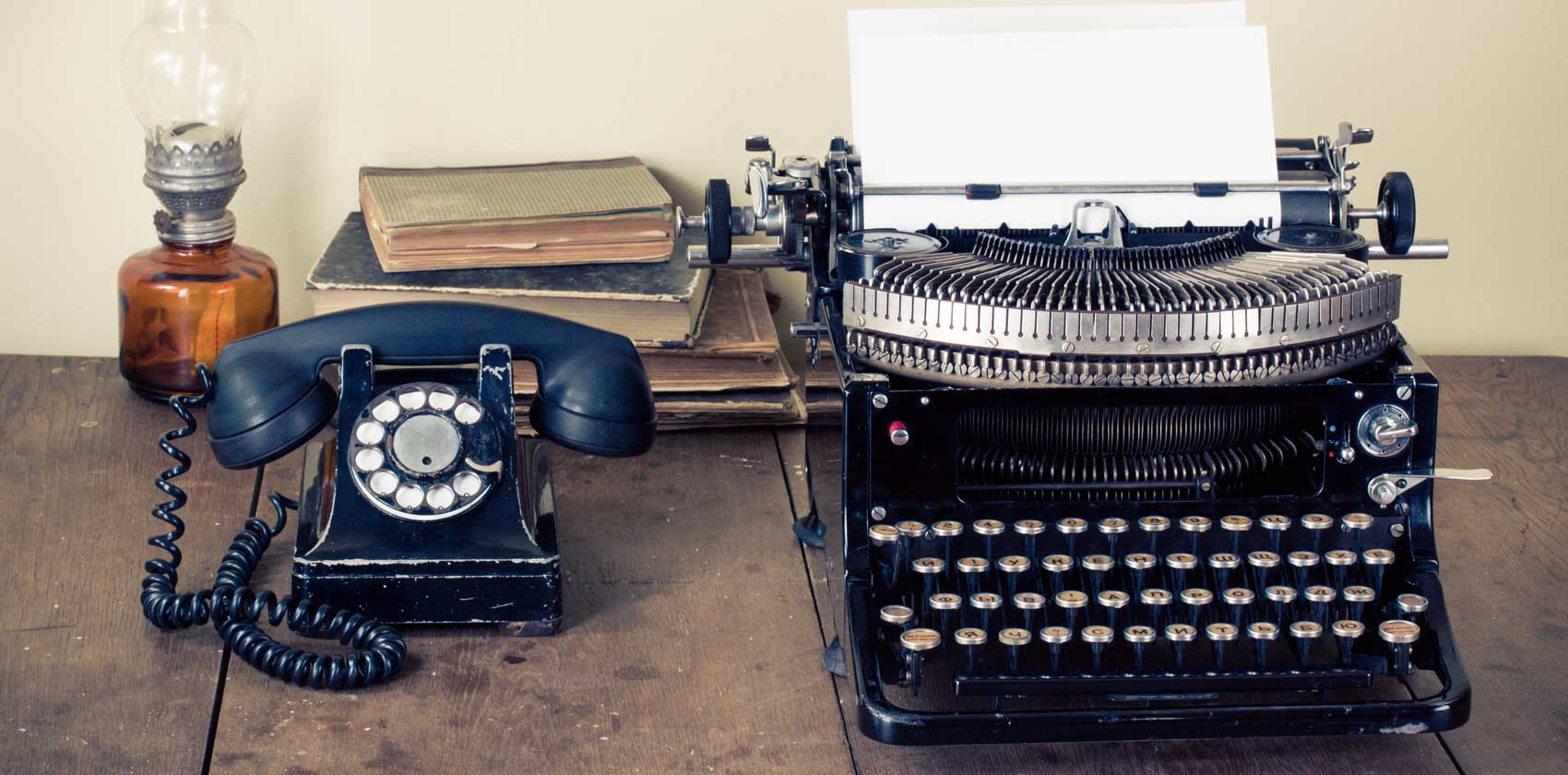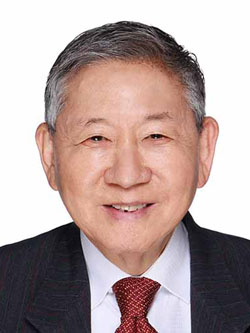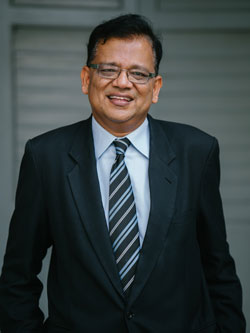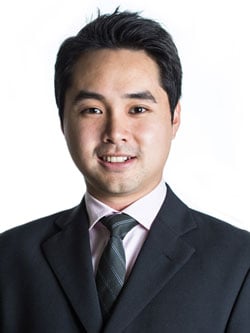
Pupillage, Then and Now
Three practitioners of varying vintage share their experiences of what it was like when they first started out. How do their experiences compare with yours?
Dr Michael Hwang, SC
Year of Call: 1968
I served as a pupil from January 1968 to November 1968.
Pupillage in 1968 reflected the technology of the period (or rather the lack thereof). I served my pupillage in Allen & Gledhill, which was then the fourth largest Singapore law firm. When I joined the firm, it had relatively recently purchased a photocopying machine, and the lawyers were still not used to the machine which was relatively expensive to operate and the recommended charge to clients approved by the Law Society was then $1 per page. I therefore saw many lawyers in the firm still using the traditional practice of communicating with clients to discuss correspondence received from other lawyers. A typical letter would run as follows:
“Dear Sir / Madam
We have today received a letter from Messrs XYZ, which reads:
(Here, the entire text of the letter received from the other party was reproduced in full, having been painfully copy-typed by the secretary)
Please let us have your instructions.
Yours faithfully”
Fax and telex were then unknown in Singapore, and all conveyancing and corporate documents had to be proof read by the typist to another typist. Courier services had not yet started operations, and overseas telephone calls were pretty expensive by today’s standards, so everything proceeded at a certain pace, especially if there was correspondence with someone overseas. Working life was therefore somewhat leisurely, which meant that working late was not usually required. I was therefore able to enjoy a reasonable social life after work, although much of that time was spent by me in teaching part time at the Law School.
But the lack of technology in one aspect produced an office procedure which was of great educational value to pupils. This was the “Letter Book” which was the standard office practice (at least in the larger firms). The Letter Book was essentially a third carbon copy of every letter sent out by the law firm. The first copy was of course despatched to the addressee. The first carbon copy would be for the office file. The second carbon copy was usually a carbon copy for the clients or the other parties. The third (or final) carbon copy would then go into the Letter Book, which was a collection of every letter despatched by the firm on a particular day, which were then bundled together and bound on a weekly basis. If, therefore, a file was lost, there would still be another copy of the correspondence on that file available by going through the letter book to recreate a new office file (at least with regard to outgoing correspondence). When I reported for work on my first day, I was given a couple of closed files to read as well as the Letter Book for the previous week. I quickly found the Letter Book of much greater interest than the closed files. It was fascinating to see real law in action immediately from perusing all the correspondence in the firm on every matter which was current at the time. I got a snapshot of how to write simple business correspondence in terms of acknowledgement, attaching enclosures, letters of demand, letters denying liability and reserving all rights, and (especially beneficial) letters of advice on legal matters to the firm’s clients. It is difficult today to imagine a situation today where a pupil, not even a formal employee of the firm, could be given access to such secrets, but I suppose that pupillage was then considered a position of honour, and pupils were expected to be worthy of the trust placed in them by the firm.
I was then the only pupil in a firm of eight lawyers. In those days, Allen & Gledhill (and other law firms) did not automatically take pupils every year. So I was a bit of an oddity. There was a small group of lawyers within the firm who got together for lunch every day simply because they were fond of local food, and I was always invited to accompany them. Under the guidance of these gourmets, I quickly became an expert in knowing where the best local food was to be found in the town area. More important, I was keen to learn as much about legal practice as I could. While my main source of work came from the then Senior Partner, Robert Booker, who was one of the leading experts on Company Law, I also made it my business to learn about litigation and conveyancing from the other partners in my lunch group, and quickly formed a bond with these senior lawyers, who went out of their way to make me feel not so much as a pupil, but almost an equal in their eyes. The GH Cafe in Battery Road next to the Standard Chartered Bank was the standard hangout for lawyers, as it was conveniently situated on the way from Raffles Place to the High Court and back. More important, there was a table which was reserved for any lawyers who wished to lunch with other lawyers, so my Allen & Gledhill colleagues would often bring me to this table, and I was greeted as a junior equal by such giants of the Singapore Bar as David Chelliah and Sachi Saurajen (Drew & Napier), K C Chan (Braddell Brothers), Tan Wee Kian (Registrar of the Supreme Court), and Koh Eng Tian (Attorney-General’s Chambers).
While I followed the litigation lawyers to court, and learnt the art of mentioning cases in open court and in Chambers, the bulk of my work was in Company Law, as this was in 1968, immediately after the introduction of the Companies Act 1967, which was a major reform in Company Law and practice in Singapore. This meant that I had to learn all the important parts of the new Act, and was then assigned the task of re-writing all of Allen & Gledhill’s clients Memoranda and Articles of Association to comply with the new Companies Act. I therefore developed an early expertise in the “nuts and bolts” of Company Law, and along with the skill (which indeed it was) of proof-reading which was one thing drummed into me by the best proof reader in the firm, Robert Booker, which is an art that I have drummed into my own pupils and interns to this day.
1968 was a year that I will never forget, and I often reflect on it, comparing what pupillage was then and what it is now. The Bar was then small (when I was called, my seniority on the Roll of Advocates and Solicitors was about No 265), and the relatively leisurely pace of practice made for a more gracious atmosphere between lawyers, whatever the difference in seniority. I learnt about the unwritten customs of the Bar, such as lawyers not charging other lawyers for conveyancing work and being available to advise junior lawyers on points of law or practice or ethics without charge. The profession has come a long way since that time, but I sometimes wonder whether I would have had happier memories of my pupillage if I had done it now compared to then. I do have fond memories of my life in 1968, and I sometimes feel sorry for the pupils of this generation with the pressures that they take on so early in their career, and over specialization in narrow areas of the law before they have had a chance to learn more about all aspects of legal practice, something which Robert Booker cautioned me against by saying “Don’t be too left-handed”.

Dr Michael Hwang, SC
Michael Hwang Chambers LLC
Rajan Chettiar
Year of Call: 1997
It was 1996 when I did my pupillage (now known as training contract) in one of the largest law firms. As a busy senior partner, my pupil master (now known as supervising solicitor) had no time to train me. It was only years later that I came to appreciate the deep impact he made on my work values by his innocuous statement one day during my pupillage: “Life is all about working hard“. He was not referring to working hard in law practice only but in other aspects of life as well.
In March 1997, I started work as a legal assistant (now known as legal associate) in the same firm, thinking that I was going to quit after three years. Six years later in December 2002 I quit, burnt out, disillusioned and without a job.
During the six years, not only was I dissatisfied with my work, my personal life was not working out. I got married two months before I was called to the Bar and during the first year of practice, the marriage broke down. I then focussed all my energy in my law practice, not realising I needed help to work out the issues in my personal life. I did not know then that to be a good lawyer, my personal and professional life must function well. Being a legal assistant in a top law firm gave me a lot of financial perks and allowed me to enjoy a good lifestyle – clubbing, fine dining and travel. I never had an opportunity to go to the bank to update my bank passbook (there was no internet banking then). I just used ATM cards and credit cards. After a long while, I started to question the meaning of such a lifestyle.
I travelled around India alone to be with myself and do soul searching in 2003. I was 37 then. During the last leg of my travels in India, I realised why I wanted to become a lawyer – to help people. I was unhappy in my first job because I was working for corporates. I came home and set up my own law firm in April 2003 to help people and do what I have been passionate about since I was 14 – family law.
Going solo is not any harder (I still work 12 hour days) or more draining or difficult. One major difference – I do what I love. This inspires me to look forward to work every day up to today – my 22nd year of law practice.
I appreciate work fatigue and burn out (I suffered two major episodes of burn out in the last three years). I appreciate the difficulty and even brutal initial years of practice.
What helped me was going back at many points of the last 22 years to constantly examine why I am a lawyer. When I am very clear about the why, the how of practice becomes easier. I see the trend of young lawyers moving from one law firm to another after spending about a year or two in each firm. The young lawyers I speak to share about a need for a change and to acquire new experiences. Whilst I have tried to understand the young and restless mind, I do not think law firms are very much different from one another.
Finding a mentor and being in regular contact with him is useful. The Law Society runs mentor schemes which young lawyers can tap on. I did not have mentors during my practice but I was in the presence of legal giants who inspire me – the late Pala, SC who I still think of for inspiration; Francis Xavier, SC for his high energy, positivity and equal zeal for work and life; Ronnie Quek, my pupil master and many others. The individuals I surround myself with do not just practice law and have a family life. They engage in volunteer causes, do pro bono work, involve themselves in committees and organisations, locally and abroad. They live very full lives. They continue to inspire me to do more than lawyering and often a lot more than is possible. They inspire me to be a better lawyer and human being every day.
Self-care is important. We have to learn how to care for ourselves. I do not mean work-life balance because there is no such thing in law practice. My alternative to work-life balance or integration is “finding life in work”. Many first year associates work very long hours, experience burn out and quit law. Others move to other law firms and the cycle continues. We cannot shelve away life whilst being a lawyer. Live life and work, at the same time. It is possible. We just have to find a way to do it. There are no strategies except for individual creativity and fine tuning your personal strategy until it works.
When interviewing for an associate position, find out about the work culture of the firm and enquire about the expectations of the firm and the boss you are going to work with. With legal technology, work can be done outside of the office and at any time. Obtain the support of the boss when carving out your professional life. As bosses, we do want to support good legal associates and keep them with us.
Support from is family crucial. Family and significant others need to understand the work pressures and demands faced by young lawyers. Like marriage, law practice is a partnership between the lawyer and his family.
Spending four years in a local law school, a gruelling year doing the Part A training for overseas law students, and another year doing the Part B training is a heavy investment to just give up after two years or so of law practice. Feelings and emotions can take over us during law practice, and not only in the initial years. It is how we deal with them and being very clear on why we embark on this lifelong marathon – law practice – that keeps us going for the long haul.

Rajan Chettiar
Rajan Chettiar LLC
Wong Yi
Year of Call: 2011
The legal profession is a “profession” for a reason – beyond merely an occupation, a profession requires extensive training and specialised skill sets. It is thus imperative that the training is lifelong, ongoing, on the job, and importantly, the mind set of any lawyer, junior, mid-level or senior should always be that as well.
My own training experience begin at an interesting time – it was the crossover between the old regime known as the PLC/Pupillage, and the new (relative then) “Part B” of the Singapore Bar Examinations. A mere 10 years on, there are serious talks now to extend training contracts’ duration, and to radically alter the whole training landscape. This shows the recognised pressing need to tailor legal professional training to adapt nimbly to an ever changing landscape, both in terms of hard skills and soft skills.
Being at the crossroads of a “regime change” back then, however calibrated it was as compared to what is being discussed now, it married both the traditional aspects of “pupillage” as it was known back then, and “training contract” as UK law firms would have structured it as. Pupillage was literally job shadowing your pupil master, doing anything from mundane setting up of meetings, to the actual drafting of opinions and taking meeting minutes and interview notes. The drive behind training contracts appeared to be a little different, in the sense that the purpose was more to learn the technical hard skills in an institutionalised sense (at least for me doing my TC in a large law firm), with the soft skills (which you are meant to pick up from your pupil master personally) training conducted at lunch time centralised seminar/training sessions conducted for all trainees (client etiquette, drafting emails professionally), instead of individual pupil masters who would have expected you to treat clients the way they did, or draft e-mails in the tone they did.
Also, the rotational two or four seats in various departments of a law firm were introduced, and being a short six weeks one had in each department, little could be learnt but I felt the more vital aspect was the networking and knowing the other team members in the firm which proved invaluable as you progress in your career. For structured training contracts going forward, it is proposed to have three or six months per seat of practice area – and much more substantive learning on a technical level can take place under such regime it is hoped. Some may say it makes no difference ultimately – you only want to focus on your practice area. Knowing more practice areas could be useful in a very superficial sense, but whether it really translates to being a more all rounded lawyer, the jury is still out.
As there is no real basis for comparison (unless you repeated your training contract under both regimes), there is no right or wrong to the approaches. Very strong client relationships could be forged at the cricket club or the bar room more intimately, or could be forged at networking events after work in more formal settings with less “old boys’ club” vibes. For me personally, having experienced a little of both and having moved in-house as well, I have come to appreciate that what should remain constant is the quest for knowledge and keeping one’s mind inquisitive – inquisitive enough to at least want to know why some clients will swear by a certain lawyer even though he or she is known to be extremely temperamental and moody (even towards them!), or why some lawyers are so feared in court but such a joy to chat with in the bar room. A lot of it then goes to your own personality and what works for you both intrinsically and extrinsically. Intrinsically, you cannot upkeep an image of who you are really not. Extrinsically, you have to be aware of your clients, your practice area, and the bigger macro environment in general (for example, these days clients come to you having already lawyer-shopped and googled extensively what they are asking – how do you add value or convince them you are better than their research?)
All in all, keep curious and keep learning – with legal technology the new paradigm, it is even more important that one remains open minded and ever agile to the changing landscape.

Wong Yi
Member, Young Lawyers’ Committee






